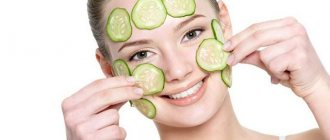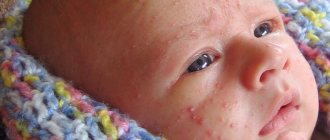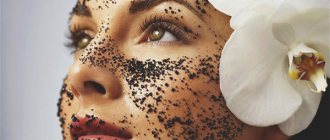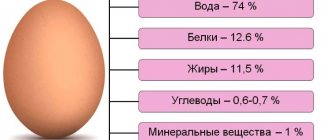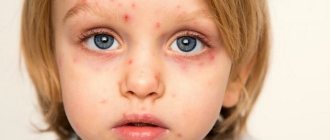Zinc ointment is a preparation based on zinc oxide, which is used in gynecology, cosmetology, to treat skin diseases, and prevent hair loss. It is recommended for rapid healing of burns and elimination of irritation. Apply a thin layer to the pathological area; in some cases, a sterile bandage is required.
It is not a hormonal drug, so it is also used in pediatric practice. The cost of packaging of 20 and 35 g ranges from 37-57 rubles.
Characteristics of Zinc ointment: main composition, properties
To understand the properties of Zinc ointment, you need to understand its composition. And it includes only two components - an active substance and an ointment base. The first is zinc oxide (Zinci oxydum):
- white or yellowish powder;
- insoluble in water and alcohol;
- per 100 g of the drug there are 10 g of zinc oxide.
The ointment base is Vaseline, which is a greasy substance, is poorly absorbed into the skin and is practically not washed off with water. Despite these disadvantages, it is the ointment base that enhances the healing properties of the active ingredient and softens the epidermis.
Effect of zinc ointment when applied to the skin:
- disinfectant, weak antiseptic;
- astringent;
- moderate anti-inflammatory;
- adsorbent;
- wound healing;
- drying.
It is important that the drug reduces the intensity of fluid secretion in inflamed tissues (exudation) and eliminates weeping of the skin. It also protects the damaged dermis layer from blood, sweat and dirt. After applying zinc ointment, a thin film is formed on the skin, under which the damaged epidermis dries and heals. It has been proven that a product based on zinc oxide:
- creates favorable conditions for active tissue regeneration;
- does not allow softening of the skin;
- stops the process of increasing the wound surface;
- absorbs bacteria, toxins;
- relieves swelling and redness;
- prevents irritation.
Hormonal or not
Zinc ointment is not hormonal, so it can be used for treatment at any age. If necessary, long-term therapy is possible without the risk of developing side effects characteristic of drugs from the hormonal category.
Benefits and harms
An ointment based on zinc oxide will be useful for various rashes, scratches and abrasions, burns, bedsores and diaper rash, but it is not suitable for full therapy - the drug only perfectly relieves the symptoms of pathologies. The harm lies in its high comedogenicity, because Vaseline clogs the pores on the skin, covers the epidermis with a thick fatty layer and prevents the penetration of oxygen into the cells.
Zinc ointment is often used by dermatologists and traumatologists in complex therapy because it:
- dries out the epidermis;
- eliminates inflammation;
- corrects the functionality of the sebaceous glands;
- eliminates pain syndrome;
- activates regeneration processes at the cellular level;
- disinfects the surface of the wound;
- ensures rapid healing.
Contraindications
Strict contraindications for the use of Zinc ointment include:
- allergy to Vaseline or the main active ingredient;
- bleeding from the wound;
- bacterial skin infection.
You should use the drug in question with extreme caution when breastfeeding - you can apply the ointment only to the mammary glands and avoid getting it on the nipple area. It is worth finding analogues of the product if the skin is excessively oily or the inflammatory process has spread greatly and the pathological focus is classified as extensive.
Side effects
Zinc ointment is usually well tolerated by patients, but in the first days of use some side effects are possible:
- skin itching, spontaneous redness, small rashes at the sites of application;
- aggressive peeling of the epidermis;
- worsening symptoms of a dermatological disease;
- slight burning, tingling when applying the drug to inflamed skin.
Very rarely, the drug provokes breathing problems (wheezing, shortness of breath/suffocation, a feeling of pressure in the chest and throat), swelling of the face, tongue and throat.
Literally 2-3 days after starting to use Zinc ointment in treatment, the side effects disappear on their own. If they become more intense and the patient’s condition worsens, then you need to stop using the drug further and consult a doctor to adjust the treatment regimen.
How to make homemade zinc oxide cream
Today, purchasing all the necessary cosmetics is a very expensive expense for any family budget. And the composition of cosmetic products does not always suit buyers.
The way out of this situation may be to prepare a cream at home from ingredients you have on hand or purchased at the pharmacy.
To prepare this cream you will need:
- sterilized glassware;
- syringe with divisions;
- mixer or whisk;
- emulsifier (cetyl alcohol, fucogel, sorbitol, wax or glycerin) to give the cream the necessary consistency;
- plant extracts and essential oils will provide the beneficial properties of the cream.
The cooking sequence is as follows:
- The fatty oils used for the cream must be heated in a water bath, add an emulsifier to them and mix thoroughly.
- To this mixture add water or herbal infusion heated to the same temperature, plant juice, mix and cool.
- Then you need to introduce the active components of the cream and essential oils.
Day moisturizer: recipe, how to make
A light face cream, toning and soothing, with the addition of zinc oxide can be prepared by mixing the following ingredients according to the above scheme.
Components:
- 100 ml aloe juice;
- 40 g coconut oil;
- 20 g zinc oxide;
- 5 g emulsifier;
- 1 g tea tree oil.
Day cream for problem skin: recipe, how to make
The cream contains:
- 60 ml of St. John's wort decoction;
- 15 g zinc oxide;
- 10 g almond oil;
- 10 g hazelnut oil;
- 10 g grape oil;
- 5 mg dry yeast;
- 3 g emulsifier;
- 1 g rosemary oil.
Prepare the cream phases separately (water and oil) according to the described scheme, add the active ingredients and mix thoroughly.
Sunscreen: recipe, how to make
To prepare you need:
- 150 g olive oil;
- 30 g beeswax;
- 10 g zinc oxide.
Heat the oil in a water bath, add the crumbled wax and mix thoroughly until the wax is completely dissolved. Gently pour zinc oxide into the mixture and cool.
Zinc oxide powder is absolutely harmless inside a cosmetic product, but is dangerous for the respiratory tract, so prepare the cream in a mask.
Whatever face cream you use, store-bought or homemade, you should be careful about its components.
Only a product that is suitable for a given skin can be beneficial , so it is worth considering the causes of the problems that it is intended to eliminate, and possible allergic reactions to the active ingredients of the cream.
In this video you will see face creams with zinc and other anti-aging products.
This video will tell you a lot of useful information about face creams.
What does Zinc ointment help with, indications for use
Zinc ointment helps against most dermatological diseases, various damage to the skin, indications for use are:
- abrasions, cuts, wounds and cracks of a superficial nature;
- eczema in the acute stage;
- prickly heat, diaper rash;
- dermatitis of various types, including photocontact;
- burns are not extensive, not deep, including sunburn;
- herpes simplex, accompanied by rashes on the skin;
- streptoderma;
- calluses, corns;
- trophic ulcers;
- bedsores;
- the initial stage of ulcerative skin lesions.
The drug helps with lichen, fungal infections of the nails and skin, hemorrhoidal fissures of the anus, weeping rashes on the face.
Causes of pimples and acne on the face
Pimples or blackheads are an inflammatory process of the sebaceous gland and hair follicles. Accompanied by rashes, often on the forehead and chin, of varying intensity.
The rashes also vary, depending on the severity of the acne; these can be sebaceous plugs or comedones, or inflamed papules and pustules with purulent contents. After healing, they can leave marks that are very difficult to hide.
To get rid of acne, you need to find out why it occurred.
Causes of acne:
- hyperfunction of the sebaceous glands;
- insufficient cleansing of the skin;
- using a large amount of decorative cosmetics;
- hormonal disorders;
- colds;
- using unsuitable care or cleaning products;
- unhealthy diet: unbalanced diet and consumption of harmful drinks and foods;
- diseases of the digestive system;
- disruption of the endocrine system;
- taking certain medications;
- insufficient exposure to fresh air;
- avitaminosis;
- external factors: polluted air, prolonged exposure to ultraviolet radiation, tap water.
Acne can be the body's reaction to prolonged stress and lack of sleep.
Zinc ointment: instructions for use
Instructions for use of Zinc ointment indicate compliance with the following algorithm for using the drug:
- Before applying the product, clean, wash and dry the affected area. It is allowed to treat the skin with an antiseptic solution unless otherwise directed by the attending physician.
- Apply the ointment to the prepared skin with your fingertips in a thin layer. There is no need to rub it in; you just need to achieve a thin film on the surface of the entire affected area. Immediately after application, hands should be washed thoroughly with soap.
- If necessary, apply a sterile bandage to the pathological focus. It is strictly forbidden to apply a thick layer of Zinc ointment - it dries out the epidermis greatly, and this can create problems with healing.
The frequency of the procedure is 2-3 times a day.
Watch a video on how to use zinc ointment for dermatological diseases:
How to use for children
For infants and newborns Zinc ointment is often used for diaper rash. It is applied under a diaper, the procedure is carried out before bedtime, and the basic algorithm is saved according to the instructions. If diaper rash does not disappear within 1 week and no positive dynamics are visible, then you need to seek help from a pediatrician.
The presented product will also help with overly sensitive skin of babies, which is susceptible to prickly heat and “diaper” dermatitis. The ointment is applied to the skin around the anus and the entire surface of the buttocks.
It is advisable to use Zinc ointment for chickenpox - the blisters become very itchy, wet, and their contents provoke irritation of the epidermis. A drug that is applied to the rash 1-3 times a day will help relieve the child of such symptoms.
Is it possible during pregnancy and breastfeeding?
Zinc oxide ointment can be used during pregnancy and breastfeeding. The main active ingredient does not penetrate the placental barrier and into breast milk. But the instructions clearly state that during lactation it is strictly forbidden to treat nipples with the drug so that zinc oxide does not enter the baby’s body.
For burns
For burns Zinc ointment should be used only if there are 1st degree injuries.
The drug is a powerful antiseptic and absorbent, so it not only draws exudate from the wound, but also has a detrimental effect on pathogenic microbes.
The ointment is applied to burns 2-3 times a day in a thin layer; for extensive lesions, it is possible to use the drug up to 6 times a day, but for this you need to obtain permission from specialists. If there are small bubbles, blisters and severe swelling on the surface of the pathological focus, you cannot self-medicate. The duration of therapy will depend on the area of thermal damage; on average, the process lasts for a period of 5-20 days.
Chemical burns are first cleared of the substance that caused the injury, and only then can treatment begin.
For skin diseases
Zinc ointment helps treat any skin diseases that are not associated with excessive dryness of the skin. The drug is especially often recommended for use against various types of dermatitis and eczema. Rules of application:
- apply the ointment in a thin layer;
- do not rub it into the dermis;
- Carry out the procedure 2-3 times a day.
When treating dermatological diseases, bandages are not applied to pathological lesions, since the faster the epidermis dries, the more intense the therapeutic effect will be. The duration of the course of use depends on the prevalence of the disease, the symptoms of the pathology; on average, Zinc ointment is applied for 7-10 days.
For skin allergies, itching
For skin allergies and itching caused by irritants, it is better not to use Zinc ointment. It has pronounced anti-inflammatory properties and can relieve redness, itching and irritation. But the drug is not able to reduce the activity of histamines or block them - the symptoms will become less pronounced, but the allergic reaction itself will only progress.
How to use on face
In cosmetology, Zinc ointment is used as an anti-inflammatory, disinfectant and astringent in facial skin care. The drug eliminates skin irritation, excessive pigmentation, and prevents the formation of wrinkles at an early age.
For acne
For rashes on the face, an ointment based on zinc oxide helps only as part of complex therapy. Apply the product pointwise to each pimple in an amount equal to the size of a match head. Next, spread a thin layer of ointment over the surface of the problem area. If the pimple is a single pimple, then after the described procedure you can immediately apply decorative cosmetics.
For multiple rashes on the face:
- cleanse the skin using any antiseptic or lotion;
- apply a thin layer of Zinc ointment;
- after 2 hours, the excess is washed off with warm water (removed with a cotton pad);
- You can apply the product in the evening and leave it on your face until the morning.
If a pimple was previously squeezed out and a bruise formed in its place, then the use of Zinc ointment will also be advisable. It will accelerate tissue regeneration and speed up the process of resorption of hemorrhage in the subcutaneous space.
Watch a video on how to get rid of rashes using salicylic-zinc paste:
Against wrinkles, age spots
Zinc takes part in the process of producing your own collagen, so an ointment based on this substance can be safely used as an anti-aging agent. The drug is first diluted with lanolin or spermaceti moisturizer; you can add a small amount of olive or any cosmetic oil to the finished mass. Proportions are taken in an arbitrary volume, but Zinc ointment should be less than other components.
Apply the mixed preparation to previously cleansed skin of the face, neck and décolleté in the evening. It is important to carry out manipulations regularly for 20-30 days. The first results (tightening, increasing skin firmness/elasticity, smoothing out fine wrinkles, fading of age spots) can be assessed no earlier than after 15 days.
A course of facial care with Zinc ointment is recommended every 2-3 months.
For hair
Zinc ointment is applied to the scalp, lightly rubbed in with your fingertips.
Zinc has a positive effect on hair growth and regulates the production of secretions from the sebaceous glands of the head. Therefore, an ointment based on this substance is used to treat seborrhea and dandruff in oily skin. The drug will be effective in preventing early baldness and hair loss. To obtain the desired effect, Zinc ointment is used as follows:
- applied to the scalp, lightly rubbed in with fingertips;
- the “mask” remains for 1 hour;
- then everything is washed off with warm water and shampoo;
- frequency of procedures – 2 times a week;
- Duration of therapy – 1 month.
The ointment is not applied to the hair and is not used for excessively dry scalp. And to rinse off, you need to foam the shampoo several times in a row.
In gynecology
In gynecology, Zinc ointment is used only as prescribed by a doctor; it is often applied to the area of the vaginal opening for progressive vulvovaginitis. This inflammatory process is accompanied by damage to the skin, weeping, and irritation. Just the presented drug is necessary for drying the affected surface and relieving unpleasant symptoms.
Apply the ointment in a thin layer after hygiene procedures and complete drying of the inflamed surface. The procedure is carried out in the evening, before bedtime. It is highly advisable not to drink a lot of fluids at night so that you do not have to go to the toilet at night. You can use the product for no more than 5 days in a row.
For eyes
Zinc ointment is actively used to care for the area around the eyes, but not in its pure form. It is mixed in equal proportions with any moisturizing cream and applied to the desired surface in a thin layer. The manipulation is performed in the evening - the product will be absorbed overnight and the maximum possible cosmetic effect will be provided.
Zinc ointment will eliminate bruises and bags under the eyes, smooth the skin, and relieve redness and peeling. Do not use the drug for wounds under the eyes, as well as for excessively dry dermis. The procedure should not be repeated more than 3 times a week.
Can it be applied to an open wound, does it heal them?
Zinc ointment can and should be applied to an open wound according to the standard algorithm, because it heals them well and prevents the penetration of infectious agents. At the same time, no scars, blemishes or cicatrices remain at the site of damage due to the active production of collagen by skin cells.
From irritation
If skin irritation does not occur due to a dermatological disease, then it is quite advisable to use the remedy in question as a remedy. Just 2-3 applications of a thin layer of the drug to the pathological focus - and redness, small rashes, itching, peeling will completely disappear.
If foci of irritation appear with a clear frequency, then you need to seek qualified medical help and find out the cause of the pathology.
From the sun
Zinc ointment effectively protects the skin from the harmful effects of the sun and its ultraviolet rays. It is recommended to apply the product 45-60 minutes before going outside, so that the drug has time to be absorbed and a protective film is formed on the surface of the epidermis.
As a sunscreen “cream,” zinc-based ointment can also be used for children, but only from 6 months and after consultation with the pediatrician.
Face creams with zinc: review of the best products
A long-known, inexpensive and widely used zinc-containing skin product is zinc ointment, which is available in any pharmacy. In addition to the therapeutic effect, it has a softening, protective effect on problem skin, restoring its water balance.
Zinc Cream for Problem Skin is the most famous modern treatment for acne-prone skin, produced by Margarite Cosmetics. It is intended for targeted use and has a toning effect.
Products produced by Russian products have proven themselves well, in particular, “Ideal Skin” aqua cream with eucalyptus and zinc, which has a slight moisturizing effect and regulates the functioning of the sebaceous glands.
In the premium price segment, creams containing zinc are represented by the product for sensitive facial skin “Zaatar” from “Christina cosmetics”, which relieves itching and inflammation, and also promotes skin regeneration.
Important to remember! Constant use of face cream containing an element such as zinc can lead to excessive dryness of the skin, so you should use it only when necessary.
How does sulfur-zinc ointment work?
Sulfur-zinc ointment is used in veterinary medicine; for humans, a product is used that combines three main active ingredients:
- salicylic acid;
- zinc oxide;
- purified sulfur.
Salicylic-sulfur-zinc ointment is used to treat skin diseases such as eczema, dermatitis, scabies, skin irritation, and the initial stage of psoriasis. The drug is produced in the form of a paste, applied directly to the affected areas of the skin in a thin layer. The procedure is carried out once a day, the duration of therapy is 7-10 days. It is advisable not to change bed linen and not take a shower or bath during this period.
Creams with zinc, their effect on the skin
Face cream with zinc is an excellent help in the fight against aging and various skin problems.
Face creams with zinc will make your skin tightened and elastic, smooth out wrinkles and unevenness, and improve the overall tone of your face.
This type of cream has a practical effect:
- First of all, the use of a cosmetic product containing zinc elements accelerates the healing process of wounds, ulcers, and irritations caused by minor cuts and burns.
- Helps eliminate acne and small blackheads, has a drying effect on the skin.
- The risk of developing various malignant formations on the skin is reduced.
- Due to collagen, the production of which is increased by the zinc contained in the cream, the skin becomes firmer and more elastic, the complexion improves and its overall tone increases.
- The sunscreen properties of cosmetics containing zinc oxide, which blocks harmful ultraviolet radiation from the sun, are also widely known.
Analogues of Zinc ointment
The most famous analogues of Zinc ointment are:
- Cindol. Available in the form of a suspension for external use, it contains auxiliary components - potato starch, glycerin, talc, standard. It has drying, astringent properties, relieves inflammation, irritation, and redness. Indicated for use for diaper rash, dermatitis, ulcerative lesions of the skin, streptoderma, and herpes simplex.
Used 1-3 times a day, applied directly to the pathological focus. Does not require application of a sterile dressing. Suitable for treating large lesions.
- Desitin. Available in the form of an ointment with a heterogeneous structure - small “grains” may be present. The composition contains lanolin, petroleum jelly, cod liver oil, they ensure rapid and complete absorption of the drug by the skin. Belongs to the group of dermatoprotective drugs. It is used for dermatological diseases, burns and minor damage to the epidermis.
Apply to the affected area 3 times a day or more. When treating burns and wounds, sterile dressings can be used. Positive dynamics should appear within the first 72 hours of using the drug.
Analogues include not only ointments with zinc oxide, but also those drugs that have an identical effect. For example, Xeroform - the main active ingredient is completely different (bismuth salt), but the properties are similar - it dries, relieves inflammation, relieves irritation and itching, and is suitable for symptomatic therapy.
Zinc oxide in cosmetics
has a photoprotective effect;
reduces sebum production;
has an anti-inflammatory effect.
for those with sensitive skin;
for those whose skin reacts poorly to sunscreens with chemical filters.
For sun protection, the product may contain up to 25% zinc oxide or another physical filter - titanium dioxide. Their mechanism of action is simple: like a mirror, they reflect ultraviolet rays, preventing damage to skin cells.
As a UV filter, zinc oxide, along with titanium dioxide, acts as a reflector of harmful sunlight. Its only drawback is the whitish marks that remain on the skin after applying the cream.
Where to store Zinc ointment, expiration date
Zinc ointment should be stored in a dark and cool place where the air temperature does not exceed 25 degrees. The shelf life of the drug is 5 years.
Zinc ointment is a universal remedy that helps get rid of the symptoms of most dermatological diseases. The product has pronounced wound-healing properties and is actively used in cosmetology and gynecology. It has a rapid therapeutic effect - the first results can be noted already on 2-3 days of use.
Varieties
For oily skin
Owners of this type know very well how much trouble excessive sebum secretion can cause. It's just a habitat for all kinds of bacteria. Excess oil attracts dust and clogs pores.
For such skin, you need to carefully select a cosmetic product so that it not only controls the secretions of the sebaceous glands, but also harmoniously cares for it.
Zinc-based creams are the best choice. They dry out and tighten pores. The bactericidal capabilities of the cream fight against inflammatory processes that have arisen.
Lifting effect
Without zinc, collagen will not be produced. If there is enough zinc in the body, then the aging process not only slows down, but practically stops.
Whatever zinc oxide cream you buy, it will always have a tightening effect. This trace element is an excellent antioxidant; it prevents the harmful effects of free radicals. This increases skin turgor and elasticity, improves blood circulation.
Sun protection
Sunscreen cosmetics with zinc have a more pronounced effect. Multi-level skin protection is achieved. Note that all this is done by one cosmetic product.
Tonal
Your foundation requirements should always be too high. This product remains on the skin throughout the day. It is important that it does not clog pores, allows them to breathe, benefits and nourishes the skin.
Foundation with zinc oxide combines the capabilities of decorative and caring cosmetics.
Medicinal
A lack of zinc in the body is considered a problem that entails a lot of consequences. When skin and hair suffer, we are not talking about any health.
To amaze everyone with healthy and clear skin, start taking proper care of it. You can buy medicinal cosmetics in a pharmacy or in a store. Reviews indicate that almost all children's creams with zinc are suitable for adults.
The best brands
This cosmetic product contains zinc oxide. The cream is intended for protection and early healing. Suitable for sensitive and irritated skin.
Vitamin E included in the composition nourishes, softens and accelerates the healing process.
The cream is available in a 100 ml tube, it is very economical and easy to use. In addition, it does not contain preservatives or additional fragrances. Suitable for people prone to allergies.
This protective cream prevents the development of inflammatory processes, accelerates regeneration, and moisturizes.
If you use this remedy constantly and regularly, you will forget about peeling, redness and itching.
The rich composition of the product - zinc, flax extract, oil and glycerin - copes well with important tasks. They dry out irritations, nourish the skin, prevent the formation of scars, and heal microcracks.
"Zinc Olive"
This cream is intended for skin care. It is an excellent protection against irritation, abrasions and even diaper rash . This product also helps prevent sunburn.
The balanced composition of the product contains zinc oxide, which reduces irritation, is an antiseptic and repels UF radiation. Olive oil improves cell regeneration. Softens and nourishes the skin. In addition, the composition also includes castor oil, which not only softens but also rejuvenates the skin.
